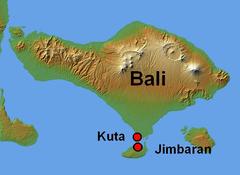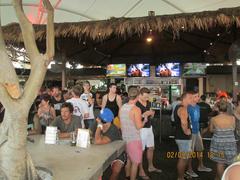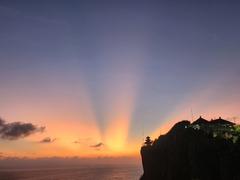Pura Pucak Mangu: Visiting Hours, Tickets, and Travel Guide to a Badung Historical Site
Date: 04/07/2025
Introduction
Perched atop Mount Mangu (Mount Catur) at 2,096 meters above sea level in Banjar Tinggan, Desa Pelaga, Badung Regency, Pura Pucak Mangu is among Bali’s most revered temples. This highland sanctuary is not only a site of deep spiritual and historical importance—being one of the Sad Kahyangan Jagat (the six main spiritual pillars of Bali)—but also a destination of outstanding natural beauty. The temple’s origins stretch back to Bali’s megalithic era, and its traditions form a living bridge between the island’s ancient past and its vibrant Hindu culture. This guide provides all the essential information for visitors, including opening hours, ticketing, trekking routes, etiquette, and practical tips to help you fully experience this unique historical site (sanrainbaliku.blogspot.com; voyageindonesie.com; baliexpress.jawapos.com).
Table of Contents
- Introduction
- Historical Background
- Visitor Information
- Trekking to Pura Pucak Mangu
- Temple Etiquette & Spiritual Experience
- Practical Tips for Visitors
- Special Events & Ceremonies
- Frequently Asked Questions (FAQ)
- Conclusion & Call to Action
- References & Links
Historical Background
Megalithic Roots and Spiritual Geography
Pura Pucak Mangu traces its origins to Bali’s megalithic era (10th–2nd centuries BCE). Archaeological evidence, including the ancient lingga-yoni, reveals that the site was a place of worship long before Hinduism’s arrival. These relics symbolize the cosmic union of Shiva and Shakti, representing a continuity of sacred practices (sanrainbaliku.blogspot.com; voyageindonesie.com).
The temple’s position as one of the Sad Kahyangan Jagat designates it as a spiritual pillar, specifically representing the northern axis in Bali’s sacred geography. Overlooking Lake Beratan, it is associated with Dewa Sangkara, the deity of fertility and nature (finnsbaliresort.com).
The Mengwi Kingdom Connection
In the 18th century, I Gusti Agung Putu, founder of the Mengwi Kingdom, sought refuge and spiritual empowerment here after defeat in battle. His retreat and meditation at Pura Pucak Mangu played a pivotal role in reclaiming his throne, cementing the temple’s legacy as a site of spiritual renewal and historical significance (baliexpress.jawapos.com).
Legends and Local Traditions
Pura Pucak Mangu is also known as Puncak Pangelengan, Puncak Beratan, or Puncak Tinggan, reflecting its diverse histories and the stewardship of Banjar Tinggan villagers, who serve as traditional custodians (voyageindonesie.com).
Rituals and Ceremonies
The temple hosts major ceremonies such as Purnama Sasih Kapat and Kapitu (full moon rituals), the unique “Ngebekin” fertility ceremony, and odalan (temple anniversary) events. These draw devotees from across Bali, affirming its standing as a kahyangan jagat (voyageindonesie.com; whatsnewindonesia.com).
Restoration and Architecture
Despite suffering earthquake and storm damage in the 20th century, the temple has been carefully restored. Its moss-covered pelinggih (sanctuaries) and classical Balinese architecture blend seamlessly with the lush montane forest, reinforcing its spiritual energy (sanrainbaliku.blogspot.com).
Visitor Information
Opening Hours & Tickets
- Opening Hours: Daily from 7:00 AM to 5:00 PM (some sources note 6:00 AM–6:00 PM; early visits recommended for sunrise and cooler weather).
- Ticketing: Entry fees are modest (typically IDR 10,000–20,000 per person, including trekking permits), or by donation at some entrances. Fees may vary by route—confirm at trailhead (balisunrisetours.com; kompasiana.com).
Getting There
- Location: Banjar Tinggan, Desa Pelaga, Kecamatan Petang, Badung, Bali, Indonesia.
- Access: About 50 km north of Denpasar, 30 km from Ubud. Private car, scooter, or hired transport recommended. Start from Tinggan Village (Petang) or Bedugul (Tabanan).
- Parking: Limited for cars; available for motorcycles at both trailheads.
Accessibility
The trek is moderately challenging, with uneven, steep, and occasionally slippery terrain. It is not suitable for those with limited mobility or severe health conditions. Children and elderly visitors should be fit and accompanied. Guided tours are highly recommended for safety and cultural context.
Facilities
Basic toilets and warungs (refreshment stalls) are available in Tinggan Village and at some rest posts. There are no shops or facilities on the trail or at the summit; bring all essentials with you.
Nearby Attractions
- Lake Beratan: For boating, photography, and the iconic Ulun Danu Beratan Temple.
- Bedugul Botanical Gardens: A showcase of Bali’s tropical flora.
- Jatiluwih Rice Terraces: UNESCO-listed, within driving distance for a day trip.
- Traditional Villages: Explore the highland communities and cultural life.
Trekking to Pura Pucak Mangu
Trekking Routes
There are two main access routes:
- Petang (Tinggan Village) Route: Well-marked, with four rest posts and clear signage.
- Bedugul Route: Scenic but less well-marked; trail guidance by colored ribbons.
The trek takes 2–3 hours one way, depending on your fitness and weather conditions. The first half is gentler, while the second half is steeper and may require ropes for support in wet conditions (kompasiana.com; balitoursclub.net).
What to Expect on the Trail
- Nature: Dense, misty montane forests, home to eagles, civet cats, monkeys, deer, and butterflies (balitivity.com).
- Rest Posts: Four shelters along the Petang route, with panoramic views at the summit.
- Climate: Cool temperatures (15–22°C) and frequent mist; best trekking in the dry season (May–September).
Temple Etiquette & Spiritual Experience
- Dress Code: Sarong and sash required for entry (rentals sometimes available). Cover shoulders and knees.
- Behavior: Be quiet and respectful; remove shoes in the inner sanctum; do not touch offerings or shrine structures.
- Restrictions: Entry is prohibited for menstruating women, following local customs.
- Photography: Allowed in outer areas; ask before photographing ceremonies or worshippers; flash is discouraged during rituals.
- Spiritual Atmosphere: Chanting, incense, and the tranquil forest setting create a meditative environment, especially during ceremonies (whatsnewindonesia.com).
Practical Tips for Visitors
- Best Time to Visit: Dry season (April–October); start early for sunrise and to avoid midday heat.
- What to Bring: Sturdy hiking shoes, water (1.5L+), snacks, rain jacket, hat, first aid kit, camera, insect repellent, sarong/sash, trash bag.
- Trail Safety: Take care on slippery or muddy sections; wear long socks to prevent leech bites.
- Environmental Responsibility: Carry out your trash and avoid disturbing wildlife or plants.
Special Events & Ceremonies
- Purnama Sasih Kapat and Kapitu: Key full moon ceremonies drawing large gatherings.
- Ngebekin Ceremony: Unique fertility ritual celebrating Bali’s agricultural cycles.
- Odalan: The temple’s anniversary festival, held every 210 days, features offerings, music, and dance.
Visiting during these events offers a deeper cultural experience, but expect more crowds.
Frequently Asked Questions (FAQ)
Q: What are Pura Pucak Mangu’s visiting hours?
A: Daily from 7:00 AM to 5:00 PM (sometimes 6:00 AM–6:00 PM).
Q: How much is the entry ticket?
A: Typically IDR 10,000–20,000 per person; includes trekking permit. Some routes may operate by donation.
Q: Is the trek suitable for beginners?
A: Moderately challenging; beginners with good fitness can complete it. May not be suitable for young children or elderly visitors.
Q: Are guided tours available?
A: Yes, local guides can be hired in Tinggan Village.
Q: What should I wear and bring?
A: Modest clothing, sarong, sash, hiking shoes, water, and rain gear.
Q: Can I take photos?
A: Yes, but respectfully and with permission where required.
Q: Are there toilets or shops on the trail?
A: Only at the trailheads and some rest posts; none on the main trail or summit.
Conclusion & Call to Action
Pura Pucak Mangu stands at the crossroads of Bali’s ancient history, spiritual tradition, and breathtaking nature. The journey—through misty mountain forests, past ancient stones, and into a sacred sanctuary—offers an unforgettable blend of adventure and cultural immersion. Respect the site’s customs, prepare for the trek, and contribute to its preservation for future generations.
Plan your visit today!
Download the Audiala app for guided audio tours, offline maps, and the latest travel updates. Explore our related articles for more Bali temple adventures. Follow us on social media for inspiration and travel tips.
References & Links
- Pura Pucak Mangu: Visiting Hours, Tickets, and the History of Badung’s Ancient Temple (Sanrain Baliku)
- Best Temples Near Canggu Bali (Finns Bali Resort)
- Pura Pucak Mangu di Desa Pelaga Badung (Bali Express, Jawapos)
- Bali Tourism Board
- Mount Catur Trekking (Bali Sunrise Tours)
- Pura Pucak Mangu Trekking Guide (Kompasiana)
- Touch the Sky Vantage at Sacred Site Pura Pucak Mangu (WhatsNewIndonesia)
- Exploring Mount Catur and the Enigmatic Pura Pucak Mangu (Balitivity)
- Audiala App



